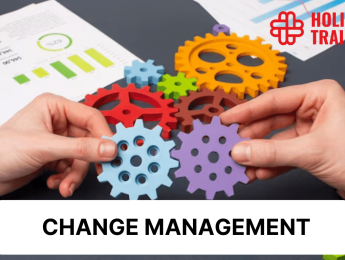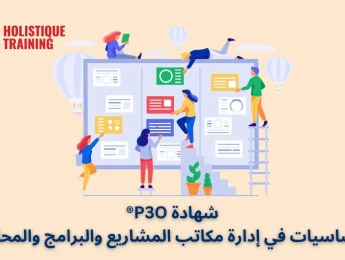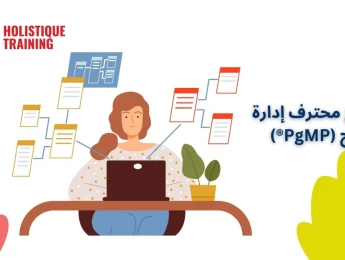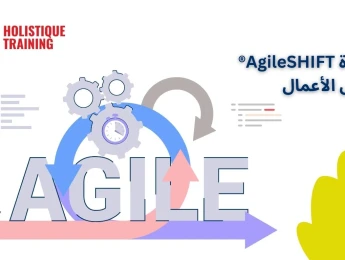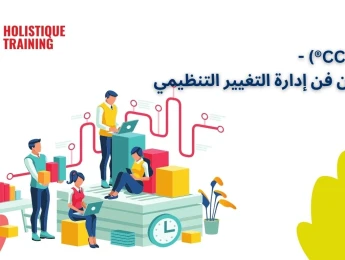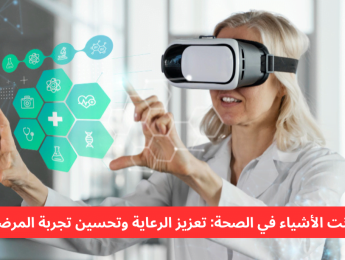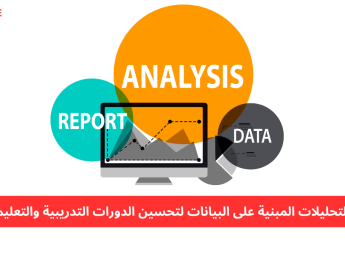- جدول المحتويات
- مفهوم التظلم الوظيفي
- أسباب التظلم على الأداء الوظيفي
- الفرق بين التظلم الوظيفي والاعتراضات الآخرى
- خطوات تقديم التظلم الوظيفي
- الاعتراض على التقييم السنوي
- الأسباب الشائعة للاعتراض على التقييم السنوي
- أهمية التعامل مع الاعتراضات بفعالية
- التركيز على النقاط الموضوعية بدلاً من المشاعر الشخصية في عملية الاعتراض
تعد بيئة العمل الصحية والشفافة أحد أبرز عوامل نجاح المؤسسات وتعزيز رضا الموظفين. ومع ذلك، قد يواجه الموظفون أحيانًا تحديات تتعلق بتقييم أدائهم الوظيفي أو القرارات المتعلقة بمسيرتهم المهنية، مما يدفعهم إلى تقديم تظلمات أو اعتراضات. التظلم الوظيفي والاعتراض على التقييم السنوي هما وسائل مشروعة تتيح للموظفين التعبير عن مخاوفهم بشأن العدالة والنزاهة في التقييمات والقرارات. هذا المقال يسلط الضوء على أهمية هذه الممارسات، أسبابها الشائعة، وكيفية التعامل معها بفعالية لضمان تحقيق العدالة وتحسين الأداء المؤسسي.
مفهوم التظلم الوظيفي
التظلم الوظيفي هو إجراء قانوني وإداري يتيح للموظفين التعبير عن اعتراضهم على قرارات أو ممارسات وظيفية يرون أنها غير عادلة أو تنتهك حقوقهم المكفولة في إطار قوانين العمل والسياسات الداخلية للمؤسسة. يشمل التظلم حالات مثل التقييم غير المنصف للأداء، التمييز في المعاملة، الفصل التعسفي، أو أي قرارات أخرى تؤثر سلبًا على وضع الموظف المهني أو المالي. يُعد التظلم وسيلة تساهم في تحقيق التوازن بين حقوق الموظفين وواجباتهم، وتساعد على تحسين بيئة العمل من خلال معالجة المشكلات بشكل رسمي وعادل.
تبدأ عملية التظلم الوظيفي عادة بتقديم شكوى خطية إلى الإدارة المختصة أو الموارد البشرية، حيث يقوم الموظف بتوضيح أسباب تظلمه مدعومة بالأدلة إذا أمكن. تستجيب المؤسسة من خلال مراجعة الشكوى، التحقيق في الوقائع، والتواصل مع الأطراف المعنية للوصول إلى حل مرضٍ للطرفين. تعتمد فعالية التظلم الوظيفي على التزام المؤسسات بتوفير قنوات شفافة وعادلة لاستقبال الشكاوى، وضمان عدم تعرض الموظفين لأي نوع من الانتقام بسبب تقديم تظلمهم.
من المهم أن يكون التظلم الوظيفي أداة تعزز من الثقة بين الموظف والإدارة، حيث يؤدي التعامل الاحترافي مع الشكاوى إلى تحسين العلاقة الوظيفية وزيادة رضا الموظفين. كما يسهم التظلم في بناء بيئة عمل شفافة تشجع على الحوار والتواصل، مما ينعكس إيجابيًا على إنتاجية المؤسسة وأداء العاملين.
أسباب التظلم على الأداء الوظيفي
.1عدم وضوح معايير التقييم
عندما تكون معايير التقييم غير محددة أو غير مفهومة للموظفين، قد يؤدي ذلك إلى شعورهم بعدم الإنصاف في تقييم أدائهم. إذا لم تُحدد المعايير بشكل واضح منذ البداية، قد يواجه الموظف صعوبة في معرفة كيفية تحقيق التوقعات المطلوبة. هذا الغموض يمكن أن يسبب الإحباط ويؤدي إلى انخفاض الثقة في نظام التقييم. لذا، يعتبر توضيح المعايير وتفسيرها جزءًا أساسيًا لتحقيق الشفافية والعدالة.
.2انحياز المشرف أو المدير أثناء التقييم
إذا أظهر المشرف تحيزًا شخصيًا تجاه موظف معين، سواء كان ذلك إيجابيًا أو سلبيًا، فإن ذلك يؤدي إلى تقييم غير عادل. قد يكون التحيز ناتجًا عن علاقات شخصية، أو آراء مسبقة، أو عوامل غير متعلقة بالأداء. هذا السلوك يضعف الثقة في نزاهة النظام التقييمي ويخلق شعورًا بعدم المساواة بين الموظفين، مما يؤثر سلبًا على الروح المعنوية داخل الفريق.
.3نقص الفرص لتحسين الأداء
قد يشعر الموظف بالظلم إذا لم تُمنح له فرص كافية لتطوير أدائه أو تحسين نقاط ضعفه قبل التقييم. عدم وجود برامج تدريبية أو توجيه من الإدارة يمكن أن يضع الموظف في موقف صعب ويؤدي إلى نتائج تقييم ضعيفة. يعتبر تقديم فرص التطوير والتغذية الراجعة المستمرة أمرًا ضروريًا لتحفيز الموظفين ومساعدتهم على تحقيق معايير الأداء المطلوبة.
.4تجاهل إنجازات الموظف
عندما لا يتم الاعتراف بجهود الموظف وإنجازاته في التقييم، قد يشعر بأنه غير مقدر. تجاهل النجاحات الفردية يمكن أن يؤدي إلى الإحباط واللامبالاة تجاه العمل. يتوقع الموظفون أن يكون التقييم شاملًا ويعكس كل ما أنجزوه، لذلك فإن الإدارة التي تتجاهل هذه الجوانب تقلل من الدافع وتحبط طموح الموظفين لتحقيق المزيد.

الفرق بين التظلم الوظيفي والاعتراضات الآخرى
الوجه المقارنة | التظلم الوظيفي | الاعتراضات الأخرى |
التعريف | إجراء رسمي يتيح للموظف الطعن على قرار إداري يرى أنه غير عادل أو مخالف لحقوقه الوظيفية. | رد فعل أو موقف يعبر فيه الفرد عن رفضه لأمر أو قرار دون اللجوء لإجراءات رسمية. |
المجال | يقتصر على القضايا المرتبطة بالوظيفة، مثل التقييم، الترقيات، أو العقوبات. | يشمل أي نوع من القرارات أو المواقف العامة والشخصية، سواء كانت وظيفية أو غير وظيفية. |
الإجراءات | يتطلب تقديم طلب رسمي وفق آليات محددة منصوص عليها في لوائح العمل. | قد يتم شفهيًا أو كتابيًا، بدون الحاجة إلى إجراءات محددة. |
الهدف | طلب مراجعة القرار وتصحيحه لضمان العدالة وحماية حقوق الموظف. | التعبير عن الرفض أو عدم الموافقة دون بالضرورة طلب تغيير القرار. |
الإطار القانوني | يحكمه قوانين العمل والسياسات الداخلية للمنظمات. | لا يتطلب دائمًا إطارًا قانونيًا أو تنظيمًا رسميًا. |
المعالجة | يتم من خلال قنوات رسمية مثل الإدارة المختصة أو الموارد البشرية. | يُعالج عادة عبر النقاش المباشر أو التواصل غير الرسمي. |
التأثير على العلاقة | قد يُحسن العلاقة إذا تمت معالجته بشكل عادل، لكنه قد يسبب توترًا في بعض الحالات. | يعتمد على طبيعة الاعتراض وطريقة التعبير عنه، وقد يؤدي إلى تحسين أو تدهور العلاقات. |
خطوات تقديم التظلم الوظيفي
تقديم التظلم الوظيفي يتطلب اتباع خطوات منظمة تضمن معالجة الشكوى بشكل عادل وشفاف. فيما يلي تفصيل لكل خطوة:
.1فهم المشكلة وتحديد أسباب التظلم
- يبدأ التظلم بتحديد المشكلة بدقة وفهم الأسباب التي دفعت الموظف إلى الشعور بالظلم.
- يجب تحليل الموقف وتحديد القرارات أو الأحداث التي يراها الموظف غير عادلة أو مخالفة للسياسات.
- جمع الأدلة والمعلومات ذات الصلة لدعم وجهة نظره، مثل الوثائق، التقييمات، أو المراسلات التي تبرهن على الظلم.
.2مراجعة السياسات والإجراءات الداخلية
- قبل تقديم التظلم، على الموظف مراجعة دليل الموظفين أو السياسات الداخلية للمؤسسة لفهم الإجراءات الخاصة بالتظلم.
- معرفة القواعد واللوائح يساعد في تقديم التظلم بشكل صحيح ويضمن الالتزام بالإجراءات الرسمية.
.3التواصل مع المسؤول المباشر
- كخطوة أولى، يُفضل التحدث مع المشرف المباشر أو المدير المسؤول.
- قد يتمكن المشرف من توضيح الموقف أو حل المشكلة دون الحاجة لتقديم تظلم رسمي.
- هذا التواصل يعزز فرص حل المشكلة بشكل ودي وسريع.
.4إعداد خطاب التظلم
- إذا لم يتم حل المشكلة، يقوم الموظف بإعداد خطاب رسمي يوضح فيه تفاصيل التظلم.
- يجب أن يتضمن الخطاب العناصر التالية:
- وصف واضح للمشكلة.
- الأدلة الداعمة (وثائق، شهادات).
- الطلبات أو الحلول المقترحة لمعالجة التظلم.
- وصف واضح للمشكلة.
.5تقديم التظلم إلى الجهة المختصة
- يتم تقديم خطاب التظلم إلى إدارة الموارد البشرية أو الجهة المسؤولة عن التظلمات في المؤسسة.
- يمكن أن يتطلب التظلم ملء نموذج محدد إذا كانت المؤسسة تعتمد هذه الإجراءات.
- يجب الاحتفاظ بنسخة من التظلم وتوثيق تاريخ تقديمه
.6متابعة التظلم
- بعد تقديم التظلم، يجب على الموظف متابعة حالته مع الجهة المختصة.
- قد تحتاج الجهة إلى وقت لمراجعة التظلم، جمع المعلومات، والتواصل مع الأطراف ذات الصلة.
- من المهم أن يكون الموظف متعاونًا ومستعدًا للإجابة عن أي استفسارات أو تقديم مزيد من الأدلة عند الطلب.
.7انتظار الرد واتخاذ الإجراءات اللاحقة
- بعد التحقيق، تصدر الجهة المختصة قرارها بشأن التظلم.
- إذا كان القرار مرضيًا، يُنفذ الحل المقترح.
- إذا لم يكن القرار مرضيًا، يمكن للموظف اللجوء إلى خطوات إضافية مثل التظلم إلى مستوى أعلى داخل المؤسسة أو التوجه إلى جهات قانونية مختصة.
.8الحفاظ على المهنية والشفافية
- خلال جميع المراحل، يجب أن يحافظ الموظف على أسلوب مهني وهادئ في التعامل مع التظلم.
- الابتعاد عن التصعيد غير الضروري أو التصرف بانفعالية يساهم في تعزيز فرص الوصول إلى حل عادل.

الاعتراض على التقييم السنوي
الاعتراض على التقييم السنوي هو إجراء يتخذه الموظف عندما يشعر أن تقييم أدائه الوظيفي لم يكن عادلًا أو دقيقًا. يحدث ذلك عندما تكون هناك فجوات في الشفافية أو نزاهة التقييم، مثل غياب معايير واضحة لتقييم الأداء أو تجاهل إنجازات الموظف وجهوده المبذولة. من الأسباب الشائعة للاعتراض، التحيز الشخصي من قبل المسؤول المباشر، أو ضعف التواصل أثناء عملية التقييم، حيث لا يتم إتاحة الفرصة للموظف لمناقشة أدائه أو تقديم مبررات للأخطاء المحتملة. بالإضافة إلى ذلك، قد يُغفل التقييم الظروف الخارجية التي أثرت على أداء الموظف، مثل ضغط العمل أو نقص الموارد. يساهم الاعتراض على التقييم في تعزيز الشفافية وتحقيق العدالة إذا تم التعامل معه بشكل مهني ومنظم. غالبًا ما يبدأ الموظف بتقديم طلب رسمي يعبر فيه عن اعتراضه ويوضح أسبابه مدعومًا بالأدلة، ويتم ذلك عبر القنوات المحددة في المؤسسة، مثل إدارة الموارد البشرية. الهدف الأساسي من الاعتراض هو مراجعة التقييم بطريقة عادلة وضمان حصول الموظف على حقوقه، مما يعزز الثقة في النظام الوظيفي ويحفز بيئة العمل على التطور والتحسين.
الأسباب الشائعة للاعتراض على التقييم السنوي
- عدم وضوح معايير التقييم
غياب معايير واضحة ومحددة لتقييم الأداء يجعل الموظفين يشعرون بعدم العدالة. عندما تكون التوقعات غير مفهومة أو المعايير غير معلنة مسبقًا، يصعب على الموظف تقييم نفسه ومقارنة أدائه بالمعايير المطلوبة. - التحيز الشخصي
قد يتأثر التقييم بعلاقات شخصية أو آراء مسبقة من المدير تجاه الموظف، مما يؤدي إلى نتائج غير موضوعية. هذا التحيز يُفقد التقييم مصداقيته ويؤدي إلى إحباط الموظف وشعوره بعدم المساواة. - تجاهل الإنجازات الفردية
في بعض الأحيان، يُركز التقييم على الأخطاء والنقاط السلبية فقط، دون النظر إلى الإنجازات أو التحسينات التي قام بها الموظف خلال العام. هذا التجاهل يخلق شعورًا بعدم التقدير لدى الموظف. - ضعف التواصل أثناء عملية التقييم
إذا لم يُتح للموظف فرصة لمناقشة أدائه مع مديره أو لم يحصل على تفسير كافٍ للتقييم، فإنه قد يشعر بعدم الفهم أو الظلم. الحوار المفتوح أثناء التقييم يعزز الشفافية والقبول. - عدم تقديم التغذية الراجعة المستمرة
عندما يقتصر التقييم السنوي على فترة محددة ولا يستند إلى ملاحظات مستمرة طوال العام، يشعر الموظف بأنه لم يُعطَ فرصة لتحسين أدائه قبل التقييم. - الإفراط في المقارنة بين الموظفين
مقارنة الموظفين ببعضهم دون مراعاة الفروق الفردية أو طبيعة المهام التي يؤدونها قد يؤدي إلى تقييم غير عادل. التقييم يجب أن يعتمد على الأداء الفردي وليس على مقارنة الأداء بين الزملاء. - إغفال الظروف المؤثرة على الأداء
تجاهل الظروف الخارجية أو التحديات التي واجهها الموظف خلال فترة التقييم، مثل ضغط العمل أو قلة الموارد، يمكن أن يؤدي إلى تقييم غير واقعي وغير منصف. - عدم مراجعة التقييم من جهات متعددة
عندما يعتمد التقييم على رأي شخص واحد فقط، قد يكون هناك احتمال للخطأ أو التحيز. التقييم المتعدد المصادر (360 درجة) يُعد أكثر شمولية وعدالة.
أهمية التعامل مع الاعتراضات بفعالية
.1تعزيز شفافية المؤسسات وثقة الموظفين
التعامل الفعّال مع الاعتراضات يعزز من شفافية العمل داخل المؤسسة، حيث يشعر الموظفون أن آرائهم وشكاويهم تؤخذ بجدية. عندما تكون هناك آليات واضحة لمراجعة الاعتراضات وحلها، تنشأ بيئة عمل تقدر المساواة وتدعم الثقة بين الموظفين والإدارة. هذا يساهم في تقوية الروابط التنظيمية ورفع مستوى الالتزام الوظيفي.
.2تحسين العلاقة بين الموظف والإدارة
يُظهر الاستماع الفعّال للاعتراضات احترام الإدارة لآراء الموظفين، مما يحسن العلاقة بين الطرفين. معالجة الاعتراضات بموضوعية ومهنية يقلل من التوترات والصراعات المحتملة. كما يعزز التواصل الفعّال بين الموظف ومديره، ويدعم بيئة عمل إيجابية مبنية على الاحترام المتبادل.
.3استخدام الاعتراضات كفرصة لتحسين أنظمة التقييم
الاعتراضات تساعد المؤسسات على تحديد نقاط الضعف في أنظمة التقييم الحالية. من خلال مراجعة الشكاوى، يمكن للمؤسسة فهم أوجه القصور وإجراء تحسينات تضمن عدالة التقييم وشفافيته. هذا النهج يعكس التزام المؤسسة بالتطوير المستمر وخلق بيئة عمل عادلة وداعمة.
.4زيادة رضا الموظفين وتحفيزهم
عندما يتم التعامل مع الاعتراضات بفعالية، يشعر الموظفون بأنهم جزء مهم من المؤسسة. هذا الشعور يزيد من رضاهم الوظيفي ودافعيتهم للعمل بجدية أكبر. التعامل العادل مع الشكاوى يخلق بيئة تشجع على الإبداع والتعاون، مما ينعكس إيجابيًا على الأداء العام للمؤسسة.
التركيز على النقاط الموضوعية بدلاً من المشاعر الشخصية في عملية الاعتراض
التركيز على النقاط الموضوعية بدلاً من المشاعر الشخصية في عملية الاعتراض هو عنصر حاسم لضمان معالجة الشكوى بفعالية ومهنية. عندما يعترض الموظف على قرار أو تقييم وظيفي، فإن تقديم اعتراض قائم على حقائق وأدلة موضوعية يعزز من فرص قبول الشكوى وفهمها من قبل الإدارة. النقاط الموضوعية تشمل الوقائع المدعومة بوثائق، مثل سجل الأداء، الأهداف التي تم تحقيقها، أو مقارنة معايير التقييم بالنتائج الفعلية. على العكس، الاعتماد على المشاعر الشخصية فقط قد يؤدي إلى تقليل مصداقية الشكوى، حيث قد يُنظر إلى الاعتراض على أنه عاطفي وغير مستند إلى أسس منطقية.
عند إعداد الاعتراض، من المهم أن يركز الموظف على شرح القضايا بدقة وموضوعية، مثل تسليط الضوء على كيفية عدم وضوح معايير التقييم، أو غياب التغذية الراجعة المستمرة خلال العام. يمكن أن يتضمن الاعتراض اقتراحات لتحسين نظام التقييم بدلاً من الاكتفاء بانتقاد القرار. هذا النهج يعكس احترافية الموظف وحرصه على تحسين بيئة العمل بدلاً من مجرد التعبير عن استيائه.
إضافةً إلى ذلك، يساعد التركيز على الموضوعية في تقليل التوتر بين الموظف والإدارة، حيث يتم تقديم الشكوى بطريقة مهنية تجعل الأطراف المعنية أكثر استعدادًا للاستماع وحل المشكلة. الابتعاد عن المشاعر الشخصية، مثل الغضب أو الشعور بالإحباط، يضمن أن الحوار يظل بنّاءً، ويعزز فرص الوصول إلى حل يرضي الجميع.
أخيرًا، المؤسسات التي تشجع موظفيها على تقديم اعتراضات مبنية على نقاط موضوعية توفر بيئة عمل قائمة على الشفافية والنزاهة. هذا النوع من الاعتراضات لا يُسهم فقط في حل المشكلات بشكل عادل، بل يساعد أيضًا على تحسين السياسات الداخلية من خلال تسليط الضوء على التحديات ونقاط الضعف في النظام. التركيز على النقاط الموضوعية هو الطريقة الأمثل لتحويل الاعتراض من مجرد شكوى إلى فرصة للتطوير وبناء بيئة عمل داعمة وفعّالة.
يمثل التظلم على الأداء الوظيفي والاعتراض على التقييم السنوي أداة مهمة لتعزيز الشفافية والعدالة داخل المؤسسات. إن معالجة هذه الاعتراضات بطريقة مهنية ومنظمة لا يقتصر على تحقيق رضا الموظفين فحسب، بل يسهم أيضًا في تحسين أنظمة التقييم وتعزيز الثقة بين الإدارة والموظفين. المؤسسات التي تتبنى سياسات واضحة للتعامل مع التظلمات تعزز بيئة عمل إيجابية قائمة على الحوار والمصداقية، مما يدعم التطور المستمر وزيادة الإنتاجية.








